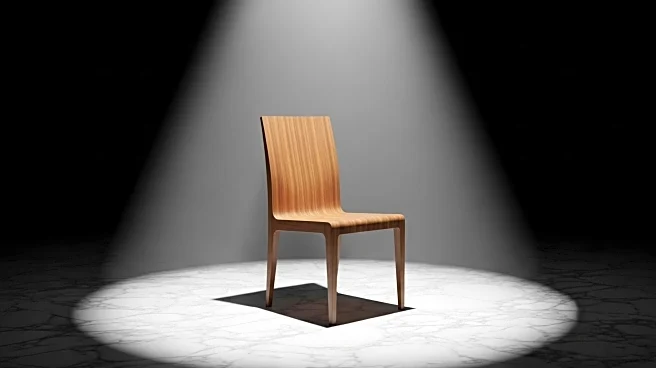What is the story about?
What's Happening?
President Trump has announced a series of new tariffs, including a 10% tariff on softwood timber and lumber and a 25% tariff on certain upholstered wooden products, set to take effect on October 14. These tariffs are part of a broader strategy to strengthen supply chains and bolster industrial resilience. The announcement follows previous tariffs on kitchen cabinets and vanities, which are scheduled to begin on October 1. The tariffs are expected to impact the furniture industry significantly, with Canada, the largest supplier of wood to the U.S., facing additional duties of 35.2%. Trump has also proposed 100% tariffs on foreign films and substantial duties on furniture imports, aiming to revitalize the furniture-making industry in North Carolina. The tariffs are part of a larger trade agenda targeting pharmaceuticals, heavy trucks, and kitchen cabinetry, with duties ranging from 30% to 100%.
Why It's Important?
The new tariffs could have significant implications for the U.S. housing market and international trade relations. Home builders have expressed concerns that these tariffs may deter investments in new homes and renovations, potentially slowing down the housing market. The tariffs on Canadian imports could strain trade relations between the U.S. and Canada, impacting the supply chain for timber and lumber. Additionally, the tariffs on foreign films and furniture imports are part of an effort to boost domestic industries, particularly in North Carolina, which has seen a decline in furniture manufacturing. The broader trade agenda, including tariffs on pharmaceuticals and heavy trucks, could affect various sectors of the economy, with potential benefits for domestic producers but challenges for importers and consumers.
What's Next?
The administration may face challenges in implementing these tariffs, particularly in aiding farmers who could be adversely affected by the duties. President Trump has suggested using tariff revenue to offer bailouts to struggling farmers, although the specifics of this aid remain unclear. Furthermore, a Supreme Court review could potentially force the administration to refund billions in tariff revenue if it loses. The U.S. and China are also working towards a broader trade deal, with planned meetings between President Trump and China's President Xi Jinping. These developments could influence future trade policies and international relations.
Beyond the Headlines
The tariffs reflect broader economic and political strategies aimed at reshaping U.S. trade policies and domestic industries. The focus on revitalizing the furniture-making industry in North Carolina highlights the administration's efforts to address regional economic challenges. The potential legal challenges and international negotiations underscore the complexity of implementing such tariffs and their long-term impact on global trade dynamics.
AI Generated Content
Do you find this article useful?















